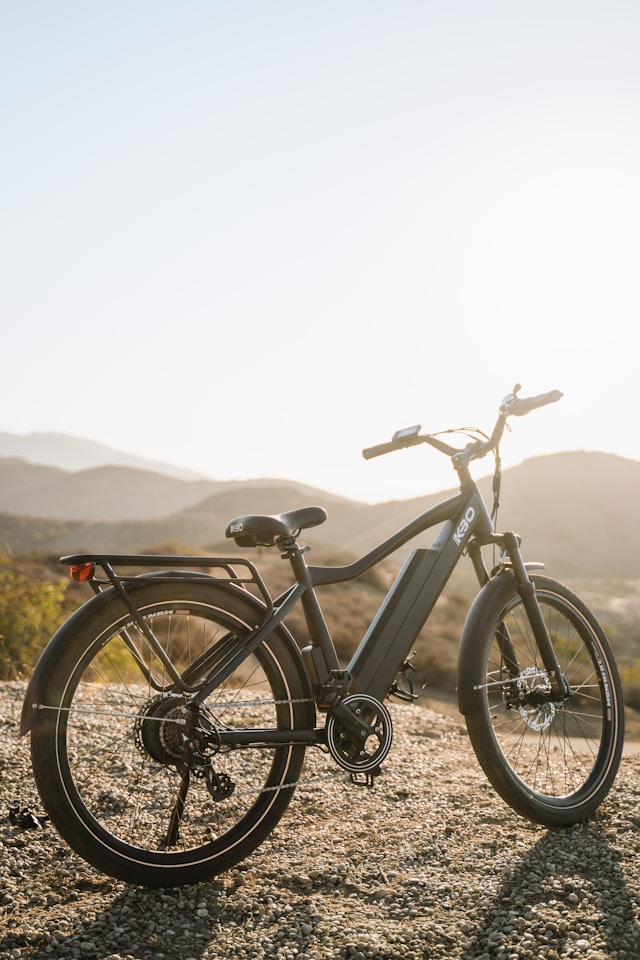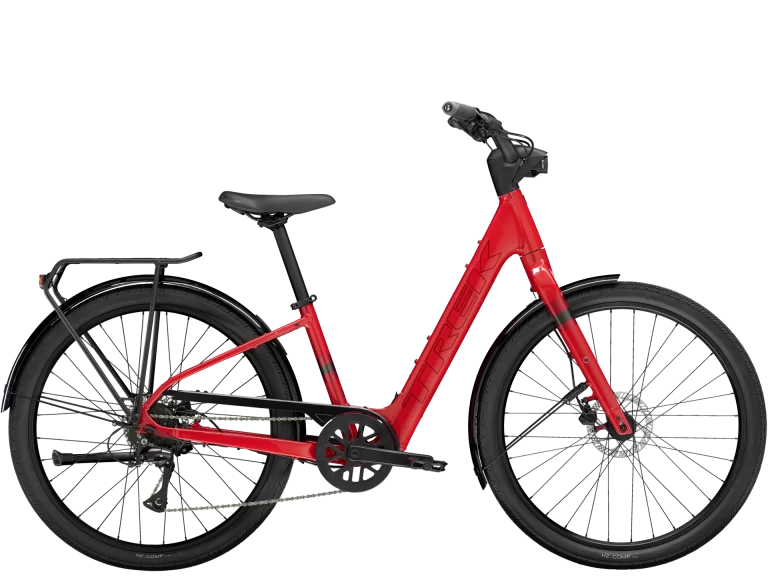Decoding The Differences Between Hub-Drive And Mid-Drive Electric Bike Motors
Just when you thought electric bikes were straightforward, the choice between hub-drive and mid-drive motors emerges as a crucial decision. Understanding the nuances between these two types of motors can significantly impact your riding experience. From power distribution to maintenance requirements, each motor system has its unique advantages and disadvantages. Let’s research into the differences between hub-drive and mid-drive electric bike motors to equip you with the knowledge needed to make the right choice for your next ride.
Key Takeaways:
- Power distribution: Mid-drive motors transfer power through the chain, utilizing the bicycle’s gears for optimal efficiency and climbing ability.
- Hub-drive motor: These motors are simpler in design and installation, providing a more direct drive that may be preferred for flat terrain or casual riding.
- Weight distribution: Mid-drive motors are located at the bike’s center, improving balance and handling, while hub-drive motors add weight to the front or rear wheel, affecting the bike’s overall feel.
- Cost and maintenance: Hub-drive systems are generally more affordable and easier to maintain, while mid-drive motors may require more technical know-how and potential professional assistance for repairs.
- Riding experience: Riders seeking a more natural biking feel may prefer the nuanced performance of a mid-drive motor, while those looking for simplicity and ease of use may enjoy the straightforward power delivery of a hub-drive motor.
The Basics of Electric Bike Motors
The world of electric bike motors can be complex and confusing for newcomers. Understanding the fundamental differences between hub-drive and mid-drive motors is crucial to making an informed decision when purchasing an electric bike. Let’s examine into the basics to clear up the enigma surrounding these two types of motors.
Definition of Hub-Drive Motors
Bike hub-drive motors are located in the center of either the front or rear wheel. These motors provide direct power to the wheel, propelling the bike forward. One of the key benefits of hub-drive motors is their simplicity and affordability. They are easier to install, and their maintenance is generally straightforward.
However, hub-drive motors can add weight to the wheel, affecting the overall balance and handling of the bike. This can make them less ideal for off-road or mountain biking. Additionally, hub-drive motors may not offer the same level of efficiency as mid-drive motors, especially on challenging terrains or steep hills.
RELATED CONTENT – A Guide to Choosing the Right Electric Bike Battery
Definition of Mid-Drive Motors
MidDrive motors are situated in the bike’s bottom bracket, between the pedals. This location allows the motor to directly power the bike’s chain, working in conjunction with the bike’s gears. The main advantage of mid-drive motors is their efficiency and performance. By leveraging the bike’s gears, mid-drive motors can provide optimal power delivery for various riding conditions.
The centered weight distribution of mid-drive motors contributes to improved handling and balance, particularly in off-road or mountain biking scenarios. Additionally, mid-drive motors can make it easier to tackle steep inclines, making them the preferred choice for riders seeking a more dynamic riding experience.
The combination of power, efficiency, and versatility makes mid-drive motors a popular choice among electric bike enthusiasts. With their ability to harness the bike’s gears for optimized performance, mid-drive motors offer a superior riding experience compared to hub-drive motors.
Comparing Hub-Drive and Mid-Drive Motors
Any individual looking to invest in an electric bike is faced with the decision of choosing between a hub-drive or mid-drive motor. Both options have their unique features and benefits that cater to different preferences and riding styles. To make an informed decision, it’s crucial to understand the differences between these two types of motors.
| Hub-Drive Motors | Mid-Drive Motors |
Performance and Efficiency
To address the performance and efficiency aspect, hub-drive motors are known for their simplicity and ease of use. They are typically quieter and require less maintenance compared to mid-drive motors. However, hub-drive motors can feel less responsive when tackling steep inclines or demanding terrain, as their power is delivered directly to the wheel.
On the other hand, mid-drive motors are lauded for their efficiency in utilizing the bike’s gears to provide a more natural riding experience. They excel in climbing hills and offer better balance and weight distribution, making them a popular choice for off-road and mountain biking enthusiasts.
RELATED CONTENT – Types of Electric Bikes
Terrain and Riding Conditions Suitability
Any rider’s choice between hub-drive and mid-drive motors should also consider the terrain and riding conditions they will encounter. Hub-drive motors are well-suited for flat terrain and casual urban commuting. In contrast, mid-drive motors are more versatile and ideal for tackling hilly terrain and rough off-road trails.
For instance, if you live in a mountainous region or plan to take your electric bike on challenging trails, a mid-drive motor would be the more suitable option due to its ability to smoothly navigate steep inclines and varied terrain. Mid-drive motors provide a better overall riding experience in demanding environments.
Advantages and Drawbacks
The Benefits of Hub-Drive Motors
All electric bike motors have their own set of advantages and drawbacks. Hub-drive motors are popular for their simplicity and low maintenance requirements. Because they are located in the hub of the wheel, these motors provide a smooth and quiet ride. Additionally, hub-drive motors are typically more affordable and easier to install, making them a convenient choice for many riders.
Another benefit of hub-drive motors is that they offer a good amount of power for flat terrain or casual riding. Their design also allows for regenerative braking, which can help extend the bike’s range by converting some of the energy back into the battery when braking.
The Benefits of Mid-Drive Motors
An alternative to hub-drive motors is the mid-drive motor. These motors are mounted near the bike’s bottom bracket, providing a more balanced weight distribution and better handling. Mid-drive motors are known for their efficiency, especially when climbing hills or tackling rough terrain. They take advantage of the bike’s gears, allowing for better torque and power utilization.
Mid-drive motors also offer a more natural riding experience, as they leverage the rider’s input and the bike’s gears to deliver power to the wheels. This can result in a smoother ride and more control, particularly in challenging conditions.
Benefits of mid-drive motors include higher efficiency, better climbing capability, and a more balanced weight distribution that enhances handling.
Potential Limitations of Hub-Drive Motors
While hub-drive motors have their advantages, there are also some potential drawbacks. One limitation is that these motors can add weight to the wheel, affecting the bike’s overall balance and handling. Additionally, hub-drive motors may not perform as well on steep inclines or rough terrain due to their location in the wheel.
Another consideration is that hub-drive motors can be more challenging to repair or replace, as they are integrated into the wheel. This could lead to higher maintenance costs in the long run compared to other motor types.
A potential limitation of hub-drive motors is their weight distribution and performance on steep inclines or rough terrain due to their placement in the wheel.
Potential Limitations of Mid-Drive Motors
On the other hand, mid-drive motors also have their own set of potential limitations. One drawback is that these motors can be more complex and may require more maintenance than hub-drive motors. The additional stress on the bike’s chain and gears from the motor’s power output could lead to increased wear and tear.
Another consideration is that mid-drive motors may come at a higher price point compared to hub-drive motors, which could be a deterrent for some riders. Additionally, the placement of the motor near the bike’s bottom bracket may make it more vulnerable to damage from debris or impacts.
Limitations of mid-drive motors include higher maintenance requirements, potential wear on the bike’s chain and gears, and a higher price point compared to hub-drive motors.
Choosing the Right Motor for Your Electric Bike
Factors to Consider When Selecting a Motor
After deciding to invest in an electric bike, the next crucial step is choosing the right motor for your needs. The two main types of electric bike motors are hub-drive and mid-drive. Each comes with its own set of advantages and considerations.
- Power and Torque: Consider the level of power and torque required for your riding needs.
- Weight Distribution: Evaluate how the motor placement affects weight distribution and handling.
- Battery Efficiency: Assess how the motor type impacts battery efficiency and overall range.
Recognizing these factors will help you make an informed decision that aligns with your riding style and requirements.
Personal Needs and Preferences
On top of technical specifications, it’s vital to consider your personal needs and preferences when selecting an electric bike motor. Are you looking for a sleek and integrated design, or do you prioritize maximum power and performance? Your intended usage, terrain, and budget will also play a significant role in determining the most suitable motor for your electric bike.
Choosing the right motor goes beyond technicalities; it’s about finding a balance between what the motor offers and what you need for an optimal riding experience.
FAQ
Q: What are the key differences between hub-drive and mid-drive electric bike motors?
A: Hub-drive motors are located in the center of the bike wheel and provide propulsion directly to the wheel, while mid-drive motors are integrated with the bike’s crankset and provide power to the chain.
Q: Which type of electric bike motor is more efficient, hub-drive, or mid-drive?
A: Mid-drive motors are generally more efficient because they leverage the bike’s gears to optimize power delivery based on the rider’s cadence and terrain, leading to improved overall performance and battery life.
Q: How do hub-drive and mid-drive motors affect the riding experience of an electric bike?
A: Hub-drive motors offer a smoother and more straightforward riding experience, making them ideal for casual rides and flat terrains. On the other hand, mid-drive motors provide a more dynamic and engaging ride, particularly suitable for challenging terrains and long-distance riding.
Q: Which type of electric bike motor is better for hill climbing, hub-drive, or mid-drive?
A: Mid-drive motors excel at hill climbing due to their ability to leverage the bike’s gears for optimal power delivery, making it easier for riders to tackle steep inclines with less effort compared to hub-drive motors.
Q: What are the maintenance considerations for hub-drive and mid-drive electric bike motors?
A: Hub-drive motors are generally easier to maintain as they have fewer moving parts exposed to wear and tear. In contrast, mid-drive motors may require more frequent maintenance due to their integration with the bike’s drivetrain system, which can be more complex and subject to higher stress levels.
Conclusion
Presently, understanding the disparities between hub-drive and mid-drive electric bike motors is crucial for choosing the right model to suit your needs. While hub drives offer simplicity and affordability, mid-drives promise better performance and efficiency. Making an informed decision requires weighing factors like terrain, riding style, and budget. To probe deeper into the intricacies of hub and mid-drive motors, explore the comprehensive guide on Compare Hub vs Mid-Drive Motors for Electric Bikes.
Kristina Grant is not just an enthusiast but a true authority on electric bikes. Nestled in the coastal beauty of Virginia, Kristina has found the perfect backdrop for her passion for electric biking. As a dedicated wife and homeschooling mom, her life revolves around family, faith, and the thrill of adventure.
Originally hailing from Ohio, Kristina's journey with electric bikes began as a curiosity and quickly evolved into a deep expertise. Her blog is a testament to her love for electric biking, combining her fascination for eco-friendly transportation with her coastal lifestyle.
When she's not cruising the beach on her electric bike, you'll find Kristina indulging in her other loves: long walks along the shore, getting lost in a good book, and cherishing moments with her loved ones. With a heart as big as her love for animals, especially cats, Kristina brings a unique perspective to the electric bike world, grounded in her strong faith in God and her dedication to a sustainable lifestyle.
Through her blog, Kristina shares her extensive knowledge of electric bikes, offering valuable insights, tips, and recommendations to fellow enthusiasts. Whether you're a seasoned rider or a newcomer to the electric bike scene, Kristina's blog is your go-to source for all things electric biking, fueled by her passion, expertise, and the scenic beauty of coastal Virginia.







